Arctic Refuge: Summer home for our birds
Editor’s Note: Autumn brings the return of many beloved Bay Area birds like White-crowned Sparrows. Where have they been all summer? This article by an Audubon Alaska staffer provides a vivid glimpse not just of where they go, but of the native people who welcome them there… and why we need to protect their summer home.
By Susan Culliney
As the Policy Associate for Audubon Alaska, I recently spent five days in remote Arctic Village at the biannual Gwich’in Gathering. The Gwich’in are a First Nation of aboriginal people from the Yukon River flats of northwestern Alaska and Canada’s Yukon and Northwest territories. They gather every other year to maintain ties with family and friends, to keep their traditional food, dance, and language alive and thriving, and to tend to the governance and resolutions of their Native nation.
In 1988, the Gwich’in Nation resolved to stand strong against drilling in the coastal plain of the Arctic National Wildlife Refuge. The coastal plain is the calving grounds for the Porcupine Caribou herd, which the Gwich’in rely on for their food security and cultural identity. Drilling activities in the coastal plain would interrupt caribou migration patterns, as well as impact denning polar bears and thousands of migratory birds. I attended this year’s gathering initially to represent Audubon’s support in this important campaign, but I also came away with an enriched understanding of the ties that bind these people so intimately to their birds, wildlife, and landscape.
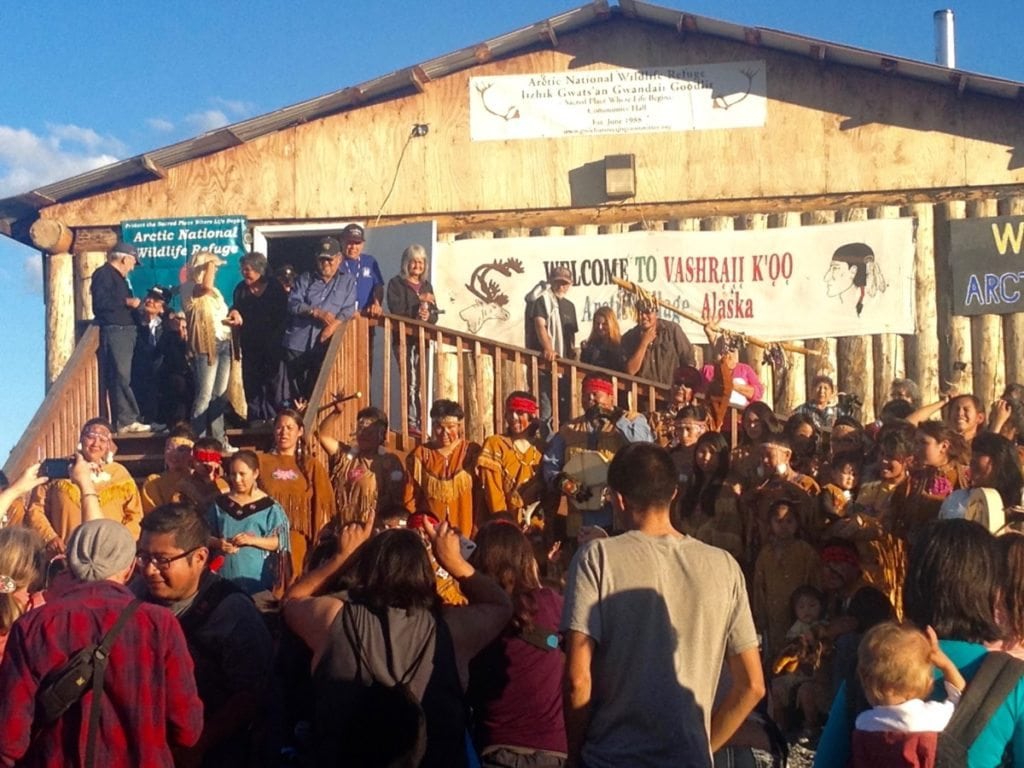

Arctic Village, called Vashraii Koo by the people who live there, is nestled in the embrace of the foothills of the Brooks Range. The village is hugged on three sides by the Arctic National Wildlife Refuge, which spreads to the north, west, and east in huge swaths of wilderness, dramatic terrain, and lakes and streams dotted with waterbirds. A few houses and buildings congregate here on high ground, surrounded by the tundra and the East Fork of the Chandalar River. Is the land empty or is it full? It depends on how you value the resounding silence, the unapologetic open space, and the timeless wildlife dramas that play out against a backdrop of unrestrained freedom.
Though the land appears motionless, caribou move in giant patterns across the tundra. Though the land appears quiet, a White-crowned Sparrow “chip!” marks the ebb and flow of the epic bird migrations that pour in and out of the Arctic, already beginning to trickle out as the summer quickly draws to a close. The Refuge is life. The Refuge is connections. This is ever more true for the people who live within this remarkable landscape.
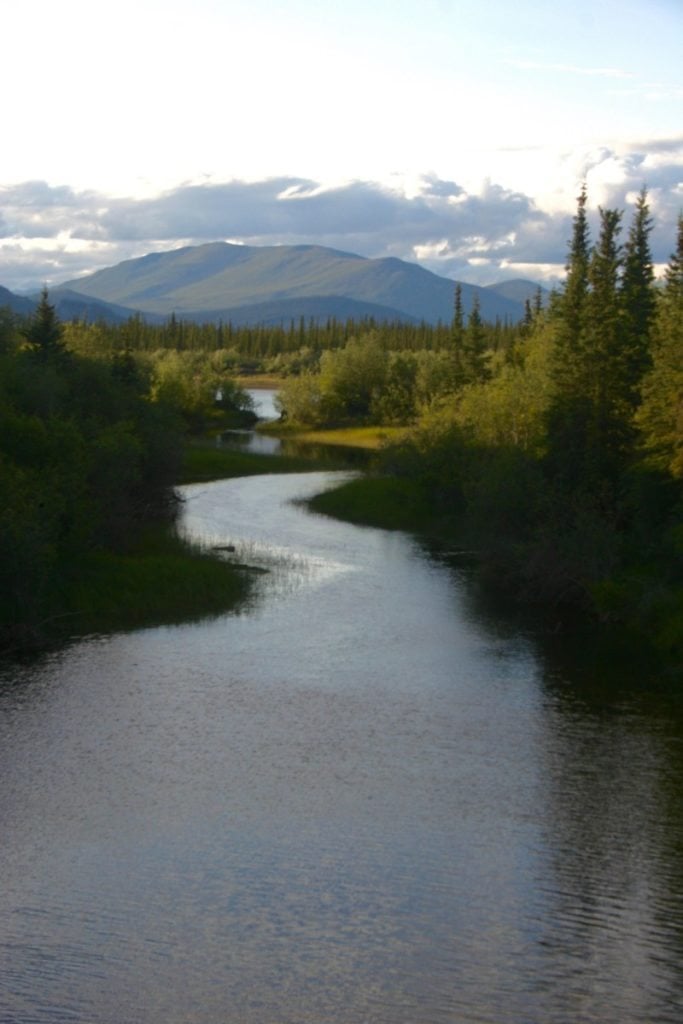
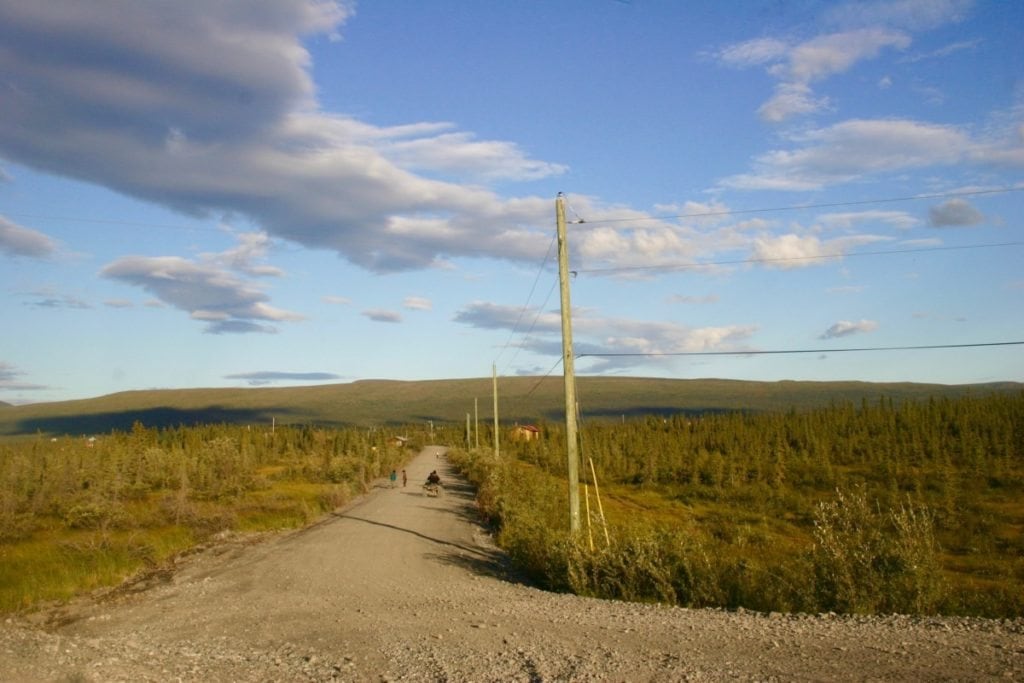
My journey started on an average commercial airliner from Anchorage to Fairbanks. I then switched to a tiny prop plane to access the Alaska bush, where passengers were weighed as well as luggage, and I had a clear view of the cockpit dials and instruments. As Fairbanks quickly fell away below us, the lines on the landscape changed. Straight lines drawn by roads and infrastructure gave way to organic lines drawn by the elements and animals: claw marks of melting ice and snow and the soft touch of wildlife trails. Rivers painted the landscape with strokes of genius.
A passenger pointed out white dots on blue ponds: Tundra Swans, staging for their remarkable trans-continental migration. The pilot pointed to four-legged shapes on the ridgeline: caribou, auspiciously drawing near our destination in time for the village gathering. As we touched down, a fleet of all-terrain vehicles awaited to ferry the new arrivals the half mile to the community center.
As a birder who works for Audubon, I immediately keyed in to the birds in the area. Young White-crowned Sparrows with brown heads tumbled around the low tundra brush. Boreal Chickadees bubbled among the short spruce trees. A Pacific Loon called hauntingly in the feeble twilight that persists through the Arctic summer nights.
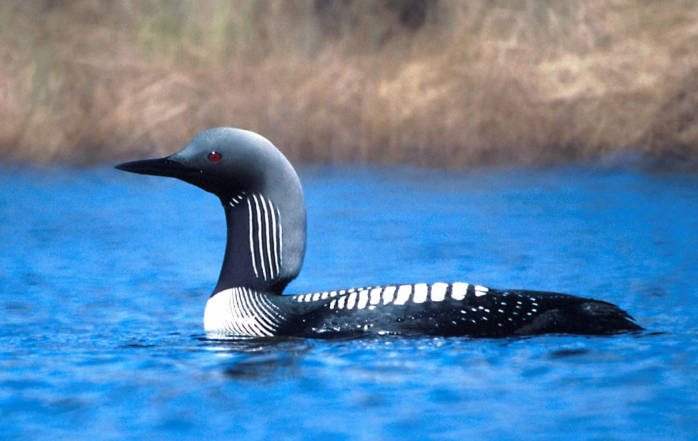

One morning I ventured out to find some early birds. It turned out that the mosquitoes are also early risers in the Arctic. I felt a bite on my hand, but resisted lowering my binoculars. I had encountered some upset redpolls, and, looking for a predator in the area, I noticed a larger bird, reminiscent of a Gray Jay or Northern Mockingbird. But the species identification wasn’t quite clicking for me. As I stared through the magnified glass, this enigmatic bird gave me his profile and I took in the hooked passerine’s beak. A young Northern Shrike, a lifer for me! The redpolls’ displeasure suddenly made sense. I could understand the small finches’ concern, given the presence of this honorary raptor. I continued to study his fluffy brownish plumage, with the faint hint of a markings around his eyes that would darken into a robber’s mask upon adulthood.
With my obvious interest in the local bird life, I quickly struck up conversations with the people who live with these birds all summer. I learned that the Gwich’in have recently compiled a Gwich’in language bird book, complete with descriptions of bird songs. English speakers know that Barred Owls are curious about “who cooks for whom,” and Song Sparrows make requests of “maids and tea kettles.” But the Arctic Refuge birds around the village speak Gwich’in. The Fox Sparrow soothes troubled hearts by singing “don’t worry my friend, it will be okay” and the White-crowned Sparrow appeals to the local Gwich’in to come pray in church on Sundays.
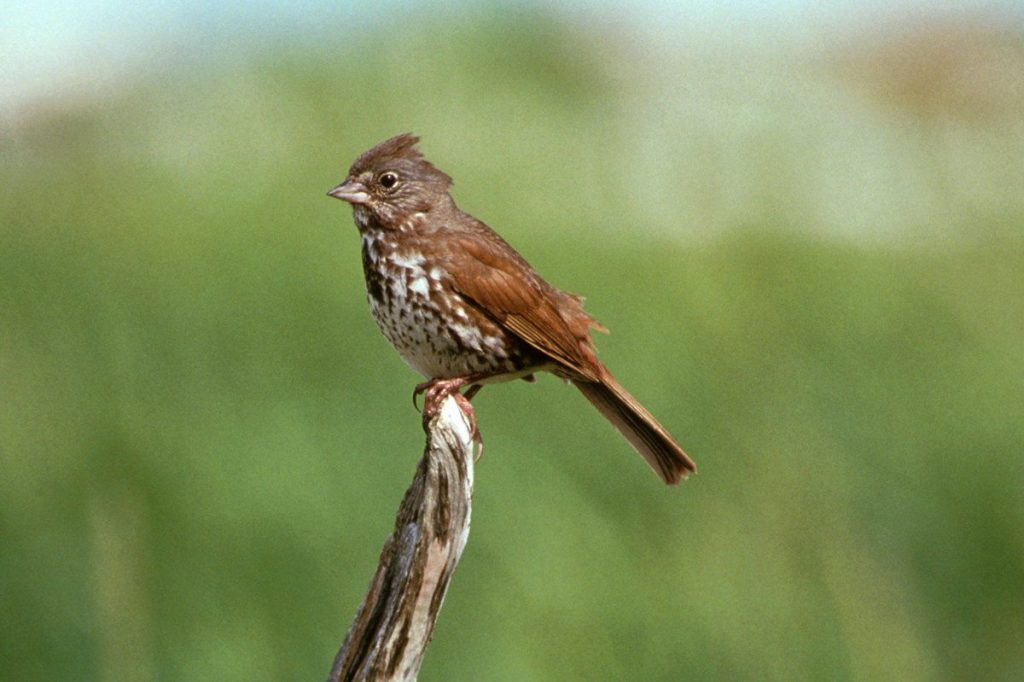
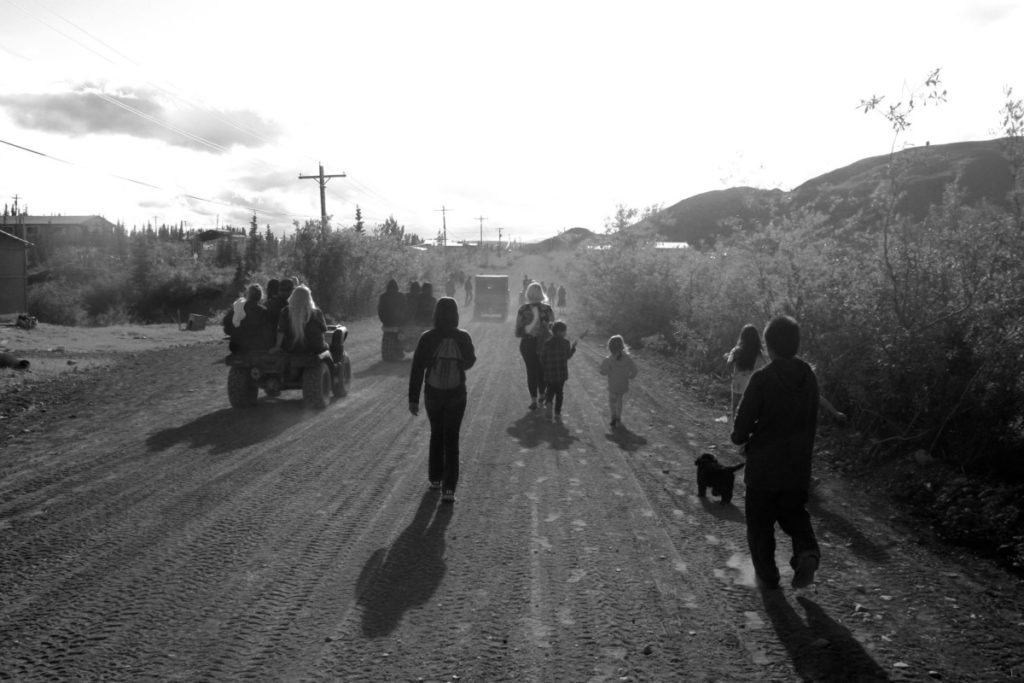
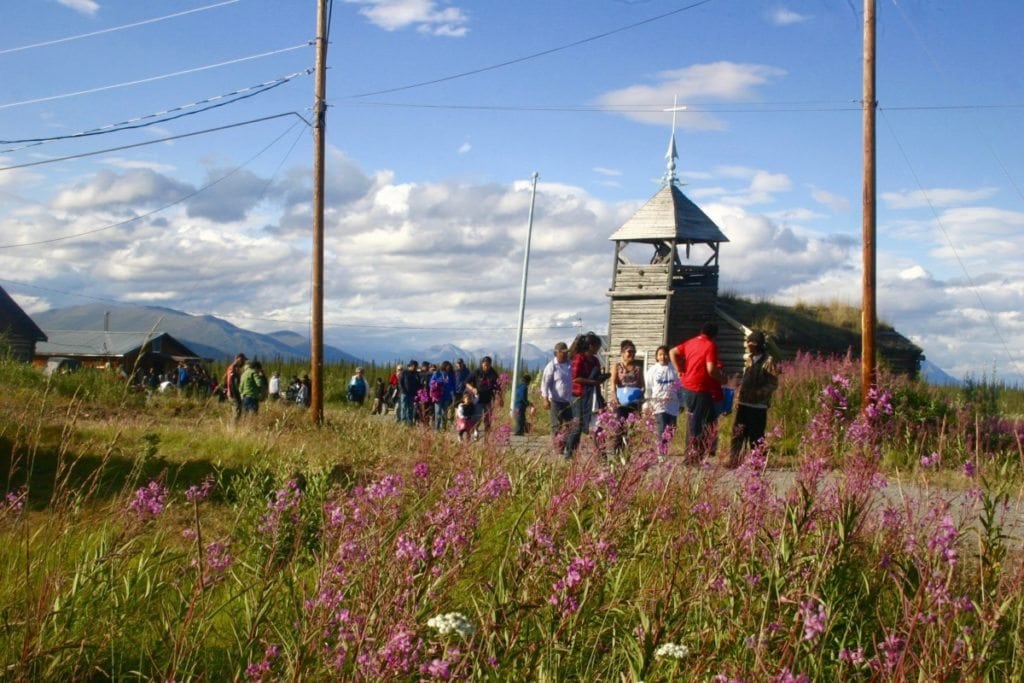
We truly are all connected to each other by the birds that we often think of as “ours.” The same sparrows beloved in backyards and at bird feeders in the Lower 48 during winter are also loved and named by local people in the long Arctic summer days.
Next time you see a White-crowned Sparrow, think of a person in the high Arctic singing out a phrase in Gwich’in that, while you may not understand the language, you would instantly identify as the melody in the sparrow’s song. If a Northern Shrike appears in your neighborhood, think about how it may have come from Arctic Village, at the edge of the Arctic National Wildlife Refuge, where the caribou roam and where even the mosquitoes can’t keep a visiting birder from pursuing the abundant bird life.
And realize too that the people who care for “your” birds all summer rely on wild places such as the coastal plain of the Arctic Refuge for their food security and cultural identity. Arctic bird songs, translated into any language, collectively tell us that now is the time to permanently set aside the coastal plain of the Arctic Refuge from oil and gas development, once and for all, forever protected.
How You Can Help
Oil and gas interests continue to press for drilling on the coastal plain of the Arctic Refuge. Ask your U.S. Representative and Senators to support the Arctic Refuge Wilderness bills pending in Congress (HR 239/S 2341). This legislation would permanently protect the coastal plain of the Arctic National Wildlife Refuge as wilderness, in recognition of its extraordinary natural values and for the benefit of present and future generations of Americans. Take action now at www.AudubonAction.org.
Susan Culliney is the Policy Associate for Audubon Alaska. Susan spent her early career as a bird biologist, banding raptors in California and tracking honeycreepers in Hawaii. She now uses her science and legal training to work on public policy and land management issues in the Arctic National Wildlife Refuge, western Alaska, the Arctic Ocean, and the Tongass National Forest in southeast Alaska.
